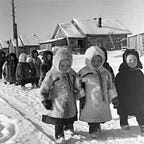Why Is Christmas on December 25?
Part 3: The Apologetic False Trail
Author: K. R. Harriman
One explanation that seems to have become popular in some apologetic circles is the idea of the “integral age” that is said to have been popular in Judaism of the time. As Louis Duchesne expressed this idea, “Christ must have lived upon the earth, it was thought, for only a complete number of years. Fractions are imperfections which do not fall in with the demands of a symbolical system of numbers, and hence they must be got rid of as completely as possible” (Christian Worship, 263). Unfortunately, there are no citations in the vicinity of this claim to demonstrate that this notion was present. More recently than Duchesne, William J. Tighe has claimed that the idea of the integral age “seems to have been widespread in Judaism at the time of Christ,” and he explains it as being, “the idea that the prophets of Israel died on the same dates as their birth or conception” (http://www.touchstonemag.com/archives/article.php?id=16-10-012-v). Unfortunately, for what was apparently such a popular idea, Tighe provides no primary (or even secondary) source citations to give us an example. This is for good reason: there is no evidence for such a belief in any Second Temple Jewish literature that would have preceded or been roughly contemporary with Jesus.
Thomas Talley, one of the foremost defenders of the aforementioned Calculation Theory, provides the closest thing to a Jewish equivalent of this idea (The Origins of the Liturgical Year, 81–83). However, the idea is in Rosh Hashanah of the Babylonian Talmud, centuries after Jesus, while it refers to claims by Rabbi Eliezer and Joshua, who died approximately a century after Jesus. Rabbi Eliezer claimed climactic significance for the month of Tishri, saying that the patriarchs were born and died in this month, that on New Year Sarah, Rachel, and Hannah were visited, that Joseph got out of prison, and the slavery of the Israelites ended, and that in the month of Tishri would be the eschatological redemption (“in the time to come”; 10b). Rabbi Joshua, in contrast, claimed such distinctions for the month of Nisan, while being able to add that the time of the coming redemption comports with the time when Israel was redeemed from Egypt (11a). Talley then draws from these statements, “time is thought of as a series of integral years so that the day of creation and the day of final redemption are the same, and on that same basis the births and deaths of the patriarchs are placed on the same day” (Ibid., 82). I think that the first claim matches the logic behind the early Christians’ claims, as I show below, but the second claim is questionable. Neither rabbi claims that the patriarchs were born and died on the same day, but only in the same month. In either text, only Isaac’s birthday is specified as being on Passover, but his day of death is not specified (just like the other patriarchs). No claim here is made about the prophets. The only case in which that claim is made, as far as I can tell, is of Moses in Kiddushin 38a (also in the Babylonian Talmud), where it is claimed that he was born and died on the same day because Moses said he was 120 years old “today” (Deut 31:2). There is no expectation or precedent regarding other prophets or righteous people in Israel’s history so that we can make the claim for some popular notion here in rabbinic literature or in earlier Jewish literature.
Also, it is notable that even these bits of rabbinic text do not support the idea that these important figures of Israel died on the same date they were born or conceived. The correlation is only made to the month (or, in the case of Moses, the day) they were born, not to the day of their conception. This claim was only made to make the Jewish precedent seem more like what the early Christians actually said, in which they worked with a triad of dates, such that Jesus’s Incarnation/conception happened on the same day as his death and then his birth was a distinct date nine months afterwards. There is a three-point correspondence here relative to a day of a month rather than a two-point one relative to a month.
In short, the claim that there was a Jewish precedent popular in the time of Jesus or the early church that linked dates of birth and death for patriarchs, prophets, or righteous men is an apologetics myth. We should drop it as it is a dead end.
Primary Sources
- b. Rosh Hashanah
- b. Kiddushin
Secondary Sources
- Duchesne, Louis. Christian Worship: Its Origin and Evolution, 2nd English ed. Translated by M. L. McClure. London: SPCK, 1904.
- Talley, Thomas J. The Origins of the Liturgical Year, 2nd ed. Collegeville, MN: Liturgical Press, 1991.
- Tighe, William J. “Calculating Christmas: The Story Behind December 25.” Touchstone. http://www.touchstonemag.com/archives/article.php?id=16-10-012-v
Read all 5 installments in K. R. Harrimans excellent series:
- Why Is Christmas on December 25?. Part 1: Scope, Stakes, and Saturnalia | by SAROLTA TATAR | Christianity — History and Culture | Dec, 2020 | Medium
- Why Is Christmas on December 25?. Part 2: The Sol Invictus Factoids | by SAROLTA TATAR | Christianity — History and Culture | Dec, 2020 | Medium
- Why Is Christmas on December 25?. Part 4: What the Church Fathers… | by SAROLTA TATAR | Christianity — History and Culture | Dec, 2020 | Medium
- Why Is Christmas on December 25?. Part 5: Summary and Conclusions | by SAROLTA TATAR | Christianity — History and Culture | Dec, 2020 | Medium
